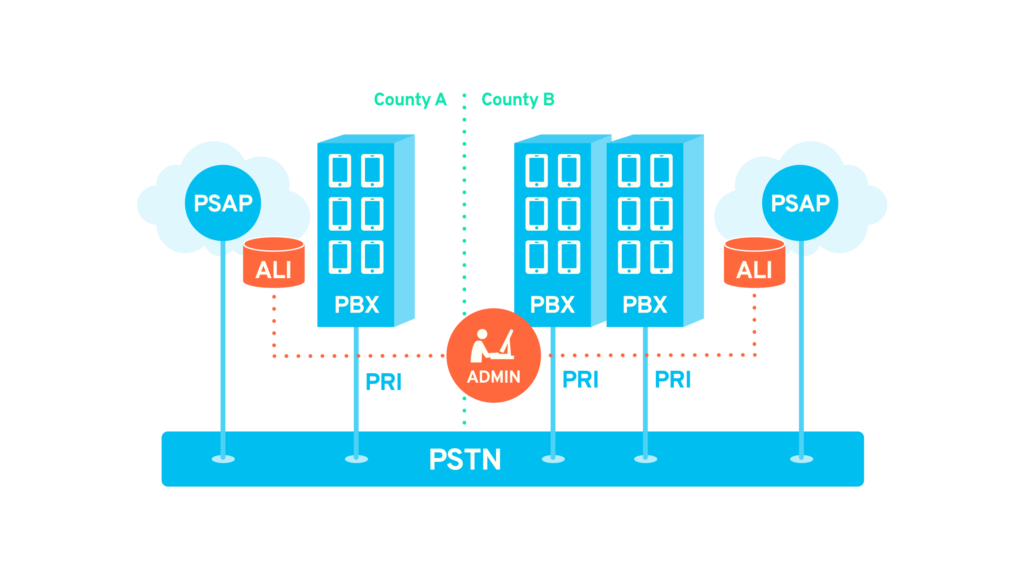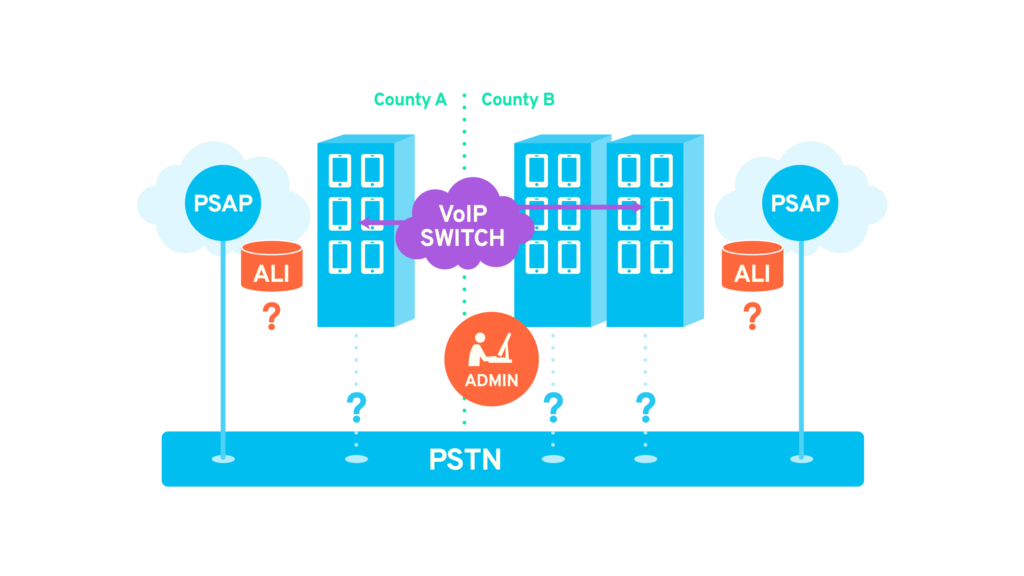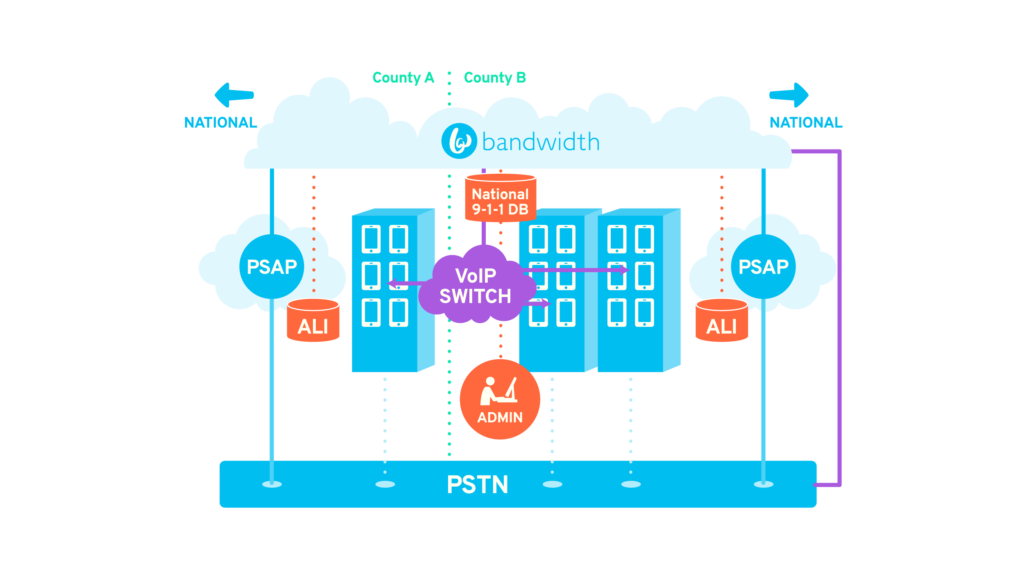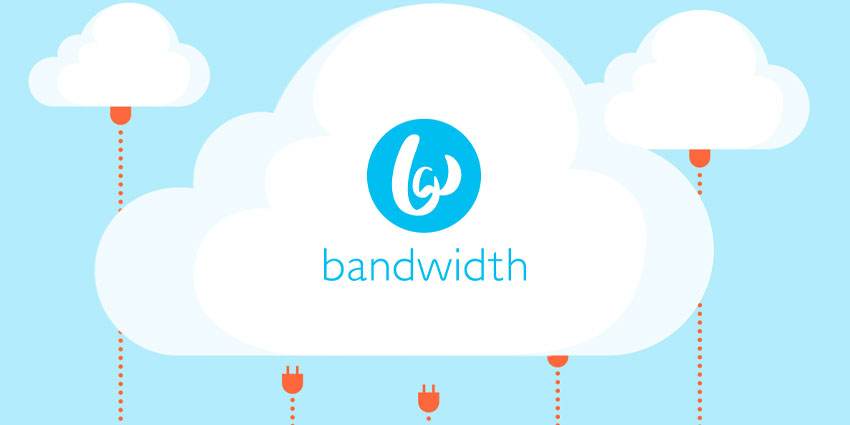You probably know your enterprise has a regulatory obligation to maintain E911 connectivity for your users – but you’re also responsible for meeting your users’ expectations. As citizens, we assume that if we needed to dial those three critical digits right now, help would be on the other end of the line.
But 911 emergency support doesn’t just happen without planning. And when you migrate your telephony to the cloud, it’s critical that you not break that essential connection, which can happen if you don’t complete the migration with experts.
Keep reading to learn:
- How your connection to 911 can break when you migrate your telephony to the cloud
- How to maintain your 911 connection through a migration
- How to stay compliant with state and federal regulations throughout a migration
How you’re connected to 911
Historically, to support 911, IT departments often had to maintain TDM, PRI, or POTs circuits into the public switched telephone network (PSTN) and the roughly 6,000 public safety answering points (PSAPs) in the U.S. and Canada. This means an administrator has to provision end user location information into the Automatic Location Information (ALI) databases for all PSAPs where a user could call 911. In other words, if you have users in multiple jurisdictions (campuses, counties, states), you’ll need to provision location information into all of those databases.
It’s set up like this:

How the 911 connection can break
The future’s in the cloud. And, because TDM/PRI/POTs circuits are expensive to maintain, moving communications there makes good economic sense. But when enterprises rip out these pricey circuits in favour of cloud communications, they may also rip out their connection into public safety.
Here’s what happens when a company eliminates their TDM/PRI/POTs circuits without an E911 solution in place:

When we speak with our customers, many of them know this, so we find that they hold onto at least one dedicated circuit into the PSTN for 911 calling. But by doing so, they forfeit many of the benefits of moving to the cloud in the first place!
911 considerations for cloud migrations
Safe, fast, cost-effective E911 connectivity in the cloud is possible, but requires the right partner with a strong understanding of how emergency services work. Here are some key questions to ask when you’re planning your E911 migration and support:
- Where are your users located?When a VoIP server is housed in a central office, 911 calls that originate from anywhere within the company may automatically be directed to the PSAP where the server is located—not necessarily the location where the 911 call is placed.So if you have a multi-site campus and an employee calls 911 from campus A, but your switch is located on campus C, the ambulance could arrive at campus C— potentially miles from the person in need.It’s important to note here that most PSAPs are not directly interconnected, so if the above scenario happens, 911 call takers have to manually transfer calls to the correct jurisdiction—and frankly, this only happens if they have those transfer procedures in place. Valuable seconds if not minutes are lost during this process, which can significantly degrade emergency response times
- Are your users fixed or nomadic?Instead of relying on desk phones, we see more and more organisations deploying softphones to support collaboration and mobility. Makes sense: employees unpinned from fixed locations have the freedom to collaborate in other buildings, across campuses or across the country. This is great for flexibility and productivity, but makes it logistically complicated to locate 911 callers
- Are you consuming voice, SIP trunking and E911 from different providers? We often come across organisations having to manage multiple providers as they transition to the cloud. Not only does this make it harder to demonstrate ROI, organisations can lose control over the quality of service when their voice provider is outsourcing 911 to 3rd parties
How to stay connected to 911
By working with a nationwide, cloud-based E911 solution provider like Bandwidth, you can eliminate costly dedicated circuits and still provide 911 support and connectivity into PSAPs across the U.S. and Canada. In fact, you can do it confidently. Here’s how.
Bandwidth’s nationwide network connects directly (and securely and redundantly) to all of the 911 tandems, or selective routers (SRs), that deliver emergency calls to public safety. So all our customers have to do is connect their VoIP switch to Bandwidth, and we route 911 calls to the appropriate PSAPs while ensuring that an accurate provisioned address, caller name and callback number displays on the dispatcher’s monitor.
Here’s how a true cloud 911 solution looks:

This means that:
- 911 calls from any location in an enterprise are quickly delivered into the appropriate PSAP, saving valuable time in emergencies
- Enterprises can provision once through the Bandwidth dashboard (or using our APIs) which will automatically populate all of the ALI databases across the country, instead of having to provision records in multiple ALI databases
- You’ll have critical location management capabilities, meaning provisioned address information is validated and any errors are corrected in real time and prior to the time of a 911 call. This means more accurate call routing and ensures that public safety has the best location information and can act quickly
- New solutions like E911 Dynamic Location Routing support the safe use of softphones across an organisation. Dynamic Location Routing leverages PIDF-LO technology to match the user with their current location at the time of a 911 call. This real-time location is used to route the 911 call, and made available to the PSAP for emergency response
How to stay E911 compliant
Connectivity isn’t the only important consideration in an E911 solution. There’s also legal compliance. Every enterprise is required to comply with a variety of existing (and emerging) state and federal regulations—and keeping track of these mandates can be complicated.
Here’s what every enterprise with multi-line telephone systems (MLTS) must know:
Federal Regulations:
On August 1, 2019, the FCC adopted an Order that implements Kari’s Law and Section 506 of RAY BAUM’s Act:
- Kari’s Law requires:
- Direct dialling to 911. In other words, callers can’t be required to dial an “8”, “9” or any other prefix or digit to reach public safety
- Notification of appropriate enterprise personnel. Any time a 911 call is placed from your organisation, a security team, front desk or other contact must receive an alert
- Compliance by February 16, 2020. Any changes to your enterprise infrastructure after this date may be subject to compliance
- Section 506 of RAY BAUM’S Act requires:
- Dispatchable location (such as street address, floor number, suite and/or room number, if applicable)
State Regulations:
- Some states have requirements for MLTS E911 compliance, and some have none at all.
- Enterprises also need to understand the state laws everywhere their end users will need access to 911
One final word of caution – even if you believe your legacy equipment is exempt from some of the new mandates, you can still be at risk of litigation and negative media attention if users’ expectations are not met during an emergency. It’s a good idea to plan accordingly with security, human resources and legal teams to review operational processes and procedures.
Here are some key questions to help jumpstart your internal assessment:
Regulatory Checklist
- Have you consulted with legal representation regarding your compliance?
- Can end users direct dial 911 without the need to dial an access code i.e., “*” or “9”press a button for an outside line?
- Have you accurately mapped user endpoint locations including address, building, floor and/or room?
- Have you tested 911 across endpoints?
- Do you have a plan for virtual workers and satellite offices?
- Are notifications set up to notify key personnel in the event there’s an emergency?
When you decide to migrate your communications to the cloud, you should receive the full cost-savings, flexibility, and future-proofing benefits. Keeping 911 fully connected during that transition to the cloud doesn’t have to be overly complex. To learn more about Bandwidth’s reliable, comprehensive E911 solutions for enterprises of all shapes and sizes, visit us at bandwidth.com.
3 Easy Steps to Migrate a Toll-Free Number to the Cloud
Guest Blog by Tricia McConnell, Product Marketing Manager, 911 & Kate Connor, Content Manager at Bandwidth
Bandwidth delivers cloud-ready voice, text messaging, and 911 built for the enterprise. We work with some of the biggest brands in the world to disrupt industries, create new products, and change the way people communicate.







